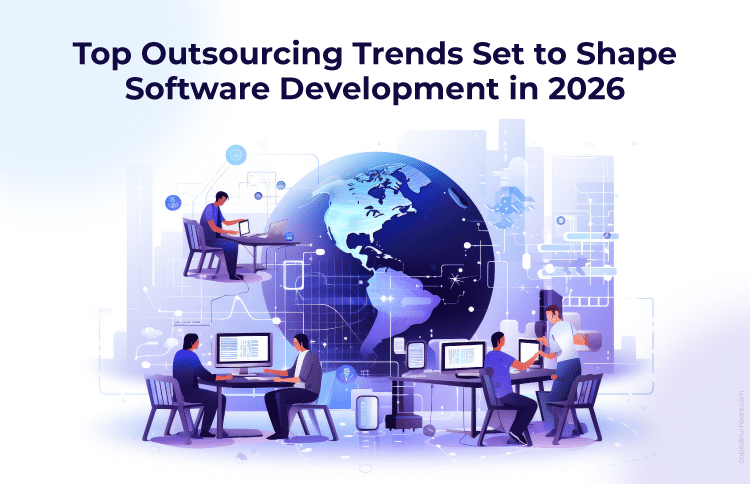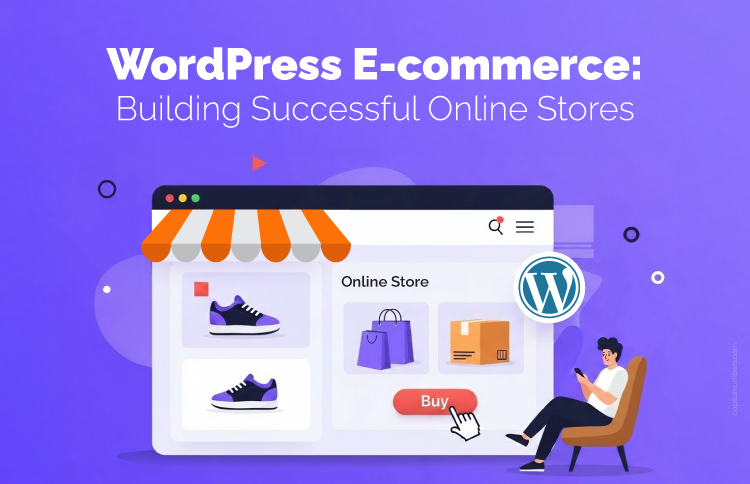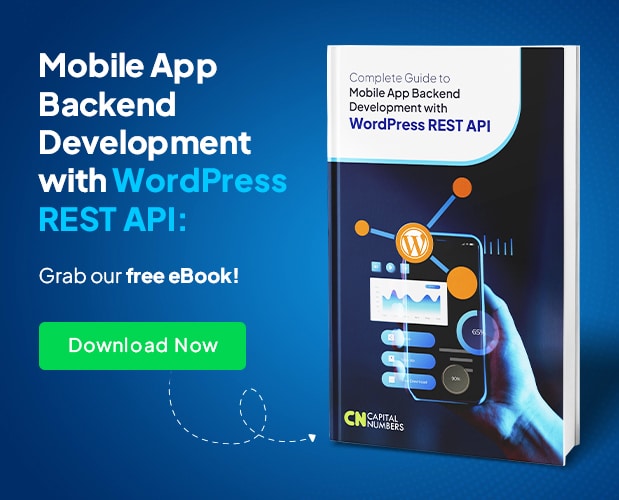From Concept to Production: The Complete Guide to Launching Large-Scale Projects
Table of Contents
You’ve got a fantastic idea – a vision that could transform your business. But as you look at the work ahead, do you worry about getting lost in the details, overspending, or ending up with a chaotic team? You’re not alone.
The journey from a great idea to a successful, revenue-generating product is tough, but it doesn’t have to be a mystery. A key part of this journey is knowing how to launch and manage large-scale projects from the beginning strategically.
This guide breaks down the complex journey from concept to production into five simple, actionable phases. Think of it as a clear roadmap that gives you the control and confidence you need at every step, turning your initial concept into a fully functional product. Eager to explore? Let’s start reading.
Phase 1: The Foundation – Strategic Planning and Discovery
Ever feel like you’re jumping into a project without a map? This is the phase where you build that map. It’s the most important step because a strong plan is the only thing that will keep your project from falling apart later on. This initial stage, often called the discovery phase, is where you do the critical thinking that will save you time and money down the road.
-
What problem are you solving?
A successful project doesn’t start with a shiny new app; it begins by solving a real problem. What’s the specific pain point for your customers? What market opportunity are you grabbing? Define this core purpose in one clear sentence. For example, your goal isn’t to “build a new app,” it’s to “reduce customer support calls by 25% by giving customers a self-service tool.”
-
Your Vision and Your Goals
Imagine what success looks like in two or three years. That’s your vision. Now, let’s make it real with S.M.A.R.T. goals (Specific, Measurable, Achievable, Relevant, Time-bound). Maybe your vision is “to be the top tool for small business finance,” and your S.M.A.R.T. goal is “to sign up 10,000 new users by the end of the year.” These goals are your milestones.
-
Market and Competitive Check
Who is this project for? What do they want and need? And just as importantly, who are your competitors? What are they doing right, and what are they missing? This research helps you build something that stands out and serves your audience effectively.
-
The Business Case and Cost of Development
Before you spend a dollar, prove that this project is worth it. A feasibility study answers if your idea is possible – technically, financially, and for your team. This is also where you address the overall cost of software development, including potential hidden costs like ongoing maintenance, security updates, third-party software licenses, and more. Once you know it’s viable, create a business Case. This document is more than just a financial projection; it outlines the strategic value and benefits to your business, such as market positioning or new revenue streams, which gives you a solid reason to ask for the resources and funding you need.
-
Our Approach in Action
We recently worked with a client who has an AI-powered messaging app serving over 10,000 brands globally. They were finding it difficult to manage customer interactions across multiple messaging platforms. Besides, they wanted to offer personalized responses. While the client had a specific purpose, we began our process by sitting with their team to understand their full expectations, set a clear goal, and define our role along with the development costs. After discussing and agreeing on these items, we proceeded to the following phases and successfully delivered the project within the given timeframe.
Eager to know the whole scenario? Read our success story!
Phase 2: The Blueprint – Detailed Project Design
Okay, you have the big idea and a solid strategy. Now, how do you turn it into a step-by-step plan that everyone can follow? This phase involves creating a detailed blueprint that guides your team and safeguards your project against common disasters.
-
Lock Down Your Project Scope
The number one killer of big projects is “scope creep” – when a project slowly grows out of control. Your best defense is a clear scope definition. This document states exactly what’s included in the project and, crucially, what is not. This keeps everyone on the same page and prevents the project from getting bloated.
-
Architectural Choices
The architecture you choose is the skeleton of your project. Two popular approaches are microservices, where an application is built as a collection of small, independent services, or serverless, which lets you build and run applications without managing servers. The right choice depends on your long-term goals for scalability and maintenance, so discuss these options with your technical partners.
-
Break Down the Work and Timeline
A huge project can feel too big to handle. Break it down into smaller, manageable tasks. By doing this, you can create a realistic project timeline with clear deadlines and milestones. This approach, often guided by agile methodologies, makes the work feel less daunting and lets you track progress with precision. It allows for flexibility and adjustments as needed.
-
Resource and Budgeting
Your budget is the engine that drives your project. Identify all the resources you need – people, tools, and money. Create a detailed budget that covers every cost, from salaries to software. Always set aside a contingency fund for unexpected costs. It ensures you have a buffer for any surprises along the way.
-
Plan for the Worst
Don’t wait for things to go wrong to react. A risk management plan begins with a thorough risk analysis, which identifies potential problems before they happen, like a key team member leaving or the budget getting cut. For each risk, you’ll have a plan to handle it, so minor issues don’t become major crises.
Phase 3: The Build – Execution & Management
This is where the vision starts to become a reality. It’s also where you need to be a strong leader, ensuring the team stays on track and communicates effectively.
-
Build the Right Team
Your project’s success depends on having the right people. Assemble a team with the necessary skills and clearly define their roles. If you’re working with an offshore software development company, make sure you have a single point of contact who can bridge your business goals with their technical work.
-
Pick Your Management Style
The way you manage the project is a key decision. Agile methods are flexible and iterative, breaking work into small “sprints” and allowing for constant changes and feedback. This is great for projects where the final design may change. Waterfall is more structured, with each step completed before the next one starts. This is better for projects with clear, unchanging goals. Compare agile and waterfall methodologies, and choose the one that best suits your project.
-
Choosing the Right Technology
This is where your business goals meet the technical details. Your outsourcing team might recommend front-end frameworks like React.js, Angular, or Vue.js to build a fast and user-friendly interface. To ensure a smooth experience, they might use tools like Webpack to optimize your code. On the back-end, they’ll choose technologies (such as Node.js, Python, or Java) to handle server logic and databases, which connect to the front-end via APIs. For reliable performance and scalability, they’ll also decide on a cloud platform like AWS, Azure, or Google Cloud. You might even consider building a PWA (Progressive Web App) for an app-like experience directly in the browser. Discussing these choices ensures your project aligns with its long-term goals and performance needs.
-
Track Your Progress
You need a way to know if you’re on track. Use your pre-defined Key Performance Indicators (KPIs) to measure your progress regularly. For example, if your goal is to have 10,000 users, a weekly KPI might be “the number of new sign-ups.” This data helps you catch problems early.
-
Keep Everyone in the Loop
Communication is everything. Set up a regular update schedule, including daily check-ins for the team, weekly reports for stakeholders, and monthly summaries for investors. This keeps everyone aligned and prevents costly misunderstandings from derailing your project.
-
Our Approach in Action
Our client, a leading e-commerce brand, came to us with a challenge: managing growing traffic and ensuring smooth performance during peak hours. After some initial discussions, we helped them build the right team – a mix of developers, designers, testers, and a project manager. After the discussion, they decided to go with an agile approach to keep things flexible and efficient. Together, we picked a tech stack that included Node.js, Google Cloud Platform (GCP), GCP Load Balancer, CI/CD Automation, and more. With regular check-ins and updates, we were able to ensure zero downtime, smooth scalability, quicker deployments, stronger security, and more.
Learn how we successfully completed the task. Explore the whole success story here.
Phase 4: The Launch – The Go-Live Strategy
The big day is here! This is the combination of all your hard work. A successful launch isn’t just about a working product; it’s about having a well-coordinated strategy that ensures your system is stable, your users are ready, and your team is prepared for what comes next.
-
The Go-Live Checklist
Before you hit the big red button, you need a comprehensive checklist. This final phase involves rigorous testing and code finalization to ensure a smooth transition. Your team will conduct User Acceptance Testing (UAT) and performance testing to ensure the system can handle a real-world user load. This is when the code is “frozen,” so no new features are added to maintain stability.
-
Deployment and Monitoring
The launch itself is a critical technical maneuver. Your team will execute a carefully planned deployment strategy to move the final code to the live production server, often using methods that minimize downtime. After the launch, you’ll need a plan for immediate support and monitoring. This includes setting up Application Performance Monitoring (APM) tools to track the system’s health in real-time and a clear process for reporting bugs.
-
Communications and Celebration
A great product won’t find an audience on its own. While your team focuses on the technical launch, your marketing plan will kick in with press releases and social media campaigns to build excitement. Finally, remember to celebrate your success! A large-scale project is a massive effort, and acknowledging the hard work of everyone involved builds morale.
You May Also Read: The Future of Software Testing: 10 Innovations to Follow
Phase 5: The Iteration – Post-Production & Scaling
Think the work is done after launch? No. A successful launch is just the beginning. This phase is about learning from real-world performance, making the product better, and strategically planning for future growth.
-
Analyze Performance and Get Feedback
Right after launch, it’s critical to look at your Key Performance Indicators (KPIs) to see if you’re hitting your goals. Gather feedback from early users, analyze user behavior analytics, and review error logs and uptime reports. This data is the most valuable tool you have for making smart, data-driven decisions about what to do next.
-
Iterate and Optimize
Use the insights you’ve gathered to plan your product roadmap. What new features should you prioritize? What bugs need to be fixed? This process of continuous improvement ensures your product stays competitive and relevant, always evolving to meet the needs of your growing user base.
-
Scale for Growth
As more and more users come on board, your project needs to scale. Proactively plan for this growth by considering how to handle increased traffic with cloud infrastructure and load balancing. Planning for scalability ensures your success doesn’t become a burden, allowing your project to grow seamlessly.
You May Also Read: Offshore Software Development in 2025: Myths vs. Facts
Bottom Line
Large-scale projects are tough, but with a structured, phase-based approach, you can overcome the challenges and achieve desired outcomes. The key is to start with a strong foundation, create a detailed blueprint, manage execution with discipline, plan for a smooth launch, and commit to continuous improvement. By following the key steps in this guide, you can tackle challenges and achieve your goals confidently.
How Capital Numbers Can Help You Launch Your Large-Scale Project Successfully?
You’ve now seen the roadmap from a great idea to a successful, revenue-generating product. The next step is finding the right partner to guide you.
At Capital Numbers, an award-winning software development company, we act as your strategic guide, helping you build your project on a solid foundation. We partner with you in the discovery phase to ensure you have a clear business case, a strategic roadmap, and a realistic budget from day one. Our top-tier developers then take your blueprint and bring it to life with flexible engagement models, including staff augmentation, fixed cost, or agile pods that fit your needs.
Our support doesn’t end at launch. We remain your partner through the iteration phase, providing post-production services to analyze performance, optimize your product, and plan for future growth. By ensuring your project scales seamlessly, we make sure your success is never a burden.
Ready to build the foundation for your next big project? Schedule a free consultation with our experts today!


















